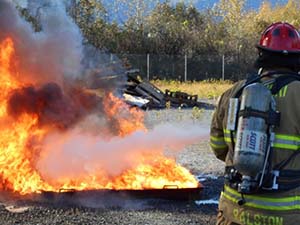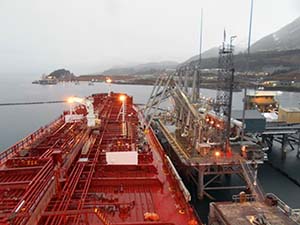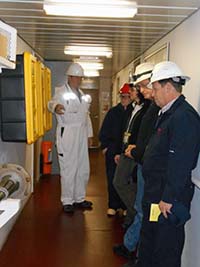This year, the council is sponsoring a project to study Columbia Glacier, looking at its retreat and loss of ice. The council hopes to learn more about possible future effects of icebergs on tanker traffic in Prince William Sound.
Columbia Glacier has long been of interest to the council. The glacier has been in a state of rapid retreat since the early 1980s, the reduction in mass has been mostly in the form of calving icebergs. These icebergs sometimes drift with the current and the wind into the vessel traffic lanes used by oil tankers in Prince William Sound. In 1989, the Exxon Valdez grounded on Bligh Reef while avoiding ice in the tanker lanes.
In the late 1990s, the council helped fund the Columbia Glacier Iceberg Monitoring Project, pioneering research first conducted by Austin Post and Wendell Tangborn. That project studied the potential for calved ice to damage oil tankers.
This year, the council is sponsoring a continuation of the original project, conducted by two well-known glaciologists, Tad Pfeffer and Shad O’Neel. Pfeffer is regarded for his work in glacial retreat and for studying tidewater glaciers worldwide. O’Neel has been extensively involved with research conducted at Columbia Glacier.
As part of this project, Pfeffer and O’Neel recently began looking at available data for Columbia Glacier, summarizing the current knowledge concerning the retreat of Columbia Glacier, especially in the interval since the original iceberg project. The two researchers were given access to Columbia Glacier observations since the 1970s and data acquired by Post and Tangborn.
Pfeffer and O’Neel will then attempt to document the current rate of iceberg calving and drift trajectories. They intend to reevaluate the concept of calculating glacier retreat rates using photographic records of daily changes in the terminus, or end of the glacier. They will also reevaluate the “mass balance,” or the difference between accumulation and melting of the glacier, and the iceberg production model developed by Post and Tangborn in the 1990s.
The researchers hope to determine the best estimate of glacial retreat and volume loss, evaluate how the icebergs move into the Sound and describe the passage constraints of icebergs over the submerged portion of the Columbia Glacier moraine.
Ultimately, over the next year, Pfeffer and O’Neel hope to develop a forecast for iceberg production by Columbia for the next ten years.


